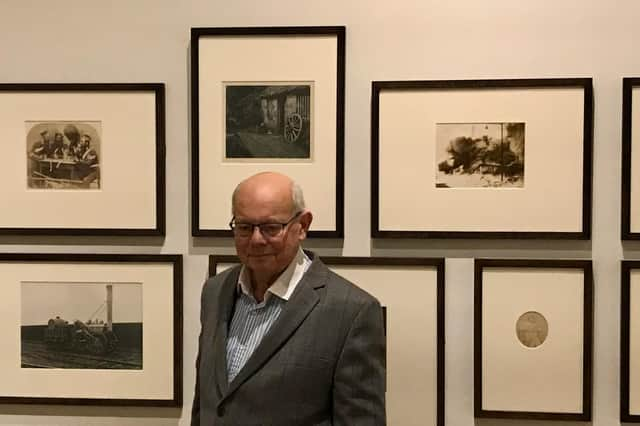Obituary: Murray Mackinnon, businessman who amassed nationally signifcant collection of photographs


Murray MacKinnon was fascinated by the work of photographic pioneers as George Washington Wilson, David Octavius Hill and Robert Adamson, who created remarkable images of Scotland’s people and places in the 19th century. Over 40 years he amassed more than 14,000 photos, capturing every facet of life in Scotland from 1840, which was purchased by the National Library of Scotland and the National Galleries of Scotland in 2018.
Murray MacKinnon was born in Glasgow on 15 March 1943 at his parents’ tenement flat on Holyrood Quadrant, off Great Western Road. He was educated at Napiershall Street Primary school and then Kelvinside Academy.
Advertisement
Hide AdAdvertisement
Hide AdAfter school, Murray studied pharmacy and then undertook a PhD at Glasgow University. He started his working life as a lecturer at St Andrews University and then joined a biotechnology firm, Biocult, as a researcher. After Biocult, Murray decided he wanted to set up his own business and moved up to Aberdeen to open a pharmacy and gift shop called MacKinnon’s of Dyce.
He was an innovative businessman who opened Scotland’s first in-store laboratory for one-hour film processing in this store. It proved extremely popular and was quite revolutionary as customers no longer had to wait more than a week to collect their treasured photographs after handing them in to be developed.
The Photo Factory in Bridge St Aberdeen was opened in 1985 and, over the next 20 years, 30 Photo Factory shops were opened throughout Scotland, making the business the largest independent photo chain in Scotland. The business was sold to Jessops in 2006, at which point Murray retired.
Murray’s interest in photography was much wider than his chain of photographic shops and for 40 years he was an avid collector of old Scottish photographs. After retiring, Murray’s interest accelerated and he amassed over 14,000 photographs of the history of Scotland, from 1840-1940. There is almost no facet of Scottish life that was not included among the thousands of images collected by Murray.
His collection was acquired by the National Library of Scotland and the National Galleries of Scotland in 2018 and was hailed as the most important photographic acquisition for the national collections in Scotland for decades.
Family portraits, studies of fishing and farming communities, scenes of shipbuilding, dockyards and distilleries, and loch and mountain landscapes all feature in the collection, much of which had never been on public display before. Spanning the 1840s to the 1940s, it also includes hundreds of images captured by a host of the nation’s earliest photography pioneers, including David Octavius Hill, Robert Adamson, Horatio Ross, Cosmo Innes and James Ross, as well as some of the country’s first successful commercial photographers, including George Washington Wilson and James Valentine.
Murray said in 2018: “The collection covers the day-to-day lives of Scottish people both rich and poor, the work they carried out including fishing and farming, in order to survive, and their social life including sport and leisure.
These were turbulent times what with industrialisation, shipbuilding, new forms of transport, the social upheaval caused by the First World War in Europe and the Boer War in South Africa. The discovery of penicillin and radiography heralded the development of medicine and the pharmaceutical industry in Scotland.”
Advertisement
Hide AdAdvertisement
Hide AdMurray also wrote a book – Scots a Photo History – which illustrates many images from his vast collection. The book includes the completion of the Forth Bridge and the stream of vessels that slid down the slipways of the Clyde – but also the story of the rural and urban poor, and the Clearances that drove people from the land to seek work in the cities or new hope in emigration to the New World.
In the last two years, Murray’s health deteriorated significantly. He suffered a stroke 18 months ago, and as a result, moved into a nursing home, Struan Lodge, in Edinburgh. Sadly, at the end of November, Murray developed pneumonia which due to his already ailing health, simply proved a battle too many. On Monday 29th November at 11.45am, he passed away peacefully at Struan Lodge.
He is survived by his sister Glenda, his son Ewan and two grandchildren, Arran and Brodie.
Obituaries
If you would like to submit an obituary (800-1000 words preferred, with jpeg image), or have a suggestion for a subject, contact [email protected]
A message from the Editor
Thank you for reading this article. We're more reliant on your support than ever as the shift in consumer habits brought about by coronavirus impacts our advertisers. If you haven't already, please consider supporting our trusted, fact-checked journalism by taking out a digital subscription. Click on this link for more details.
Comments
Want to join the conversation? Please or to comment on this article.
